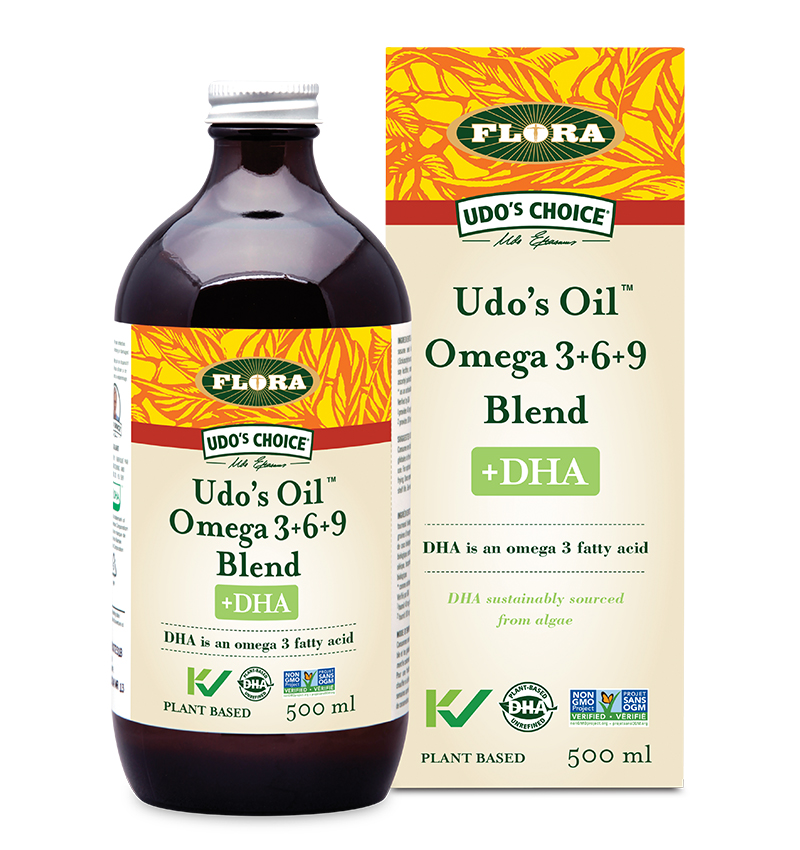Essential fatty acids (EFA): omega-3 and omega-6, are vital to the proper functioning of the body. Because our body cannot manufacture them they must be present in our diet. EFAs are necessary for healthy cell membranes, oxygen transfer, energy production, and are extremely important for the proper functioning of the body’s electrical system. EFAs are also precursors to hormone-like substances called prostaglandins which regulate vital processes in the body. A balance between omega-3s and omega-6s is extremely important. Excessive omega-6 consumption promotes inflammation in the body. Omega-3s on the other hand actually suppress inflammation in the body.
DHA: The Brain EFA
Docosahexanoic acid is an omega 3 essential fatty acid. It is an essential component of the brain and central nervous system. It seems to concentrate in areas where there is lots of electrical activity such as the synaptosomes, where nerve cells communicate, and the photoreceptors of the eye. This is why a deficiency of DHA can result in poor brain development, attention/deficit hyperactivity disorder, learning disorders, memory problems and poor visual development.
EPA: The Heart EPA
Eicosapentaenoic acid is an omega 3 essential fatty acid. It is an important fatty acid in the maintenance of cardiovascular health and the regulation of inflammation. EPA is a precursor to a series of chemicals whose job it is to regulate the inflammatory effects of arachidonic acid. Too much arachidonic acid leads to pain and inflammation in conditions such as arthritis. Arachidonic acid also causes inflammation in arteries and leads to the development of atherosclerotic plaques. Deficiency of EPA can result in cardiac arrhythmias,
high cholesterol and excessive aging. EPA has been used to treat heart disease, arthritis and other inflammatory conditions.
Benefits of Omega-3
– Reduce your risk of cardiovascular diseases.
– Improve overall heart functions.
– Reduce triglycerides and increase HDL Cholesterol (“the good cholesterol”).
– Reduce inflammation in the joints and elsewhere in the body.
– Promote healthy brain function by enhancing concentration and attentiveness.
– Promotes healthy moods and a sense of well-being.
– Improve skin health including
dry skin, eczema,
psoriasis.
– Improve your immune system.
The Omega-3 Deficiency
The average North American diet is severely deficient in omega-3 fatty acids yet excessively high in omega-6 fatty acids. Experts suggest a proper omega-6 to omega-3 ratio is around 1:1 but during this century the ratio has skyrocketed to 20:1 or greater. This imbalance is considered to be a major risk factor for the development of arthritis, cardiovascular disease, and other degenerative diseases that now plague the western world.
Omega-3s: Fish Versus Flax
The two omega-3 fatty acids required by the body are eicosapentaenoic acid (EPA) and docosahexaenoic acid (DHA). Oils from fatty fish are nature’s best source of EPA and DHA. Comparatively, flax seed oil contains a high concentration of omega-3s but in a form called alpha-linolenic acid (ALA). For the body to use ALA it must first convert it to EPA and DHA. This conversion process is very inefficient and results in less than 10% of the ALA being converted to EPA and DHA
Why are they Essential?
Omega-3s (and omega-6s) are termed essential fatty acids (EFAs) because they are critical for good health. However, the body cannot make them on its own. For this reason, omega-3s must be obtained from food, thus making outside sources of these fats “essential.”
Although the body needs both omega-3s and omega-6s to thrive, most people consume far more 6s than 3s. Hardly a day goes by, however, without reports of another health benefit associated with omega-3s. For this reason, many experts recommend consuming a better balance these two EFAs.


Reviews
There are no reviews yet.